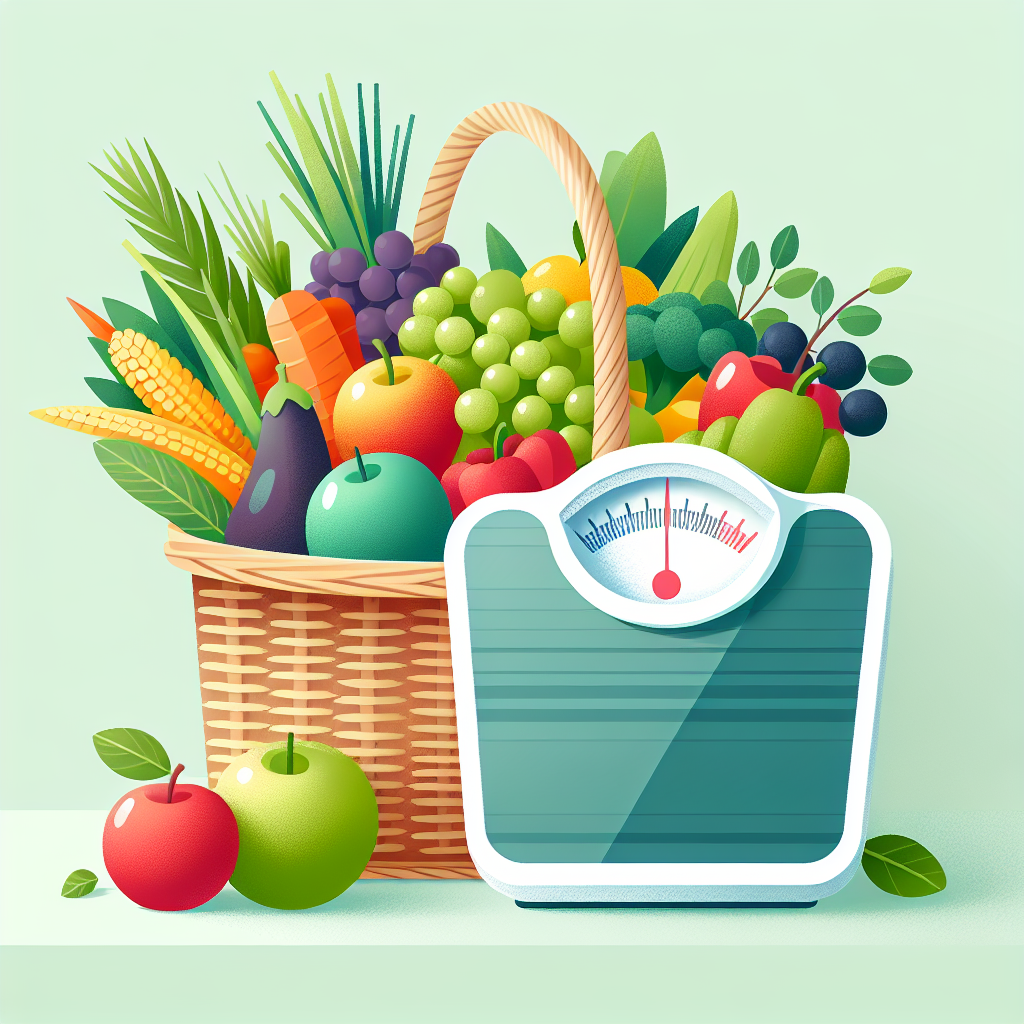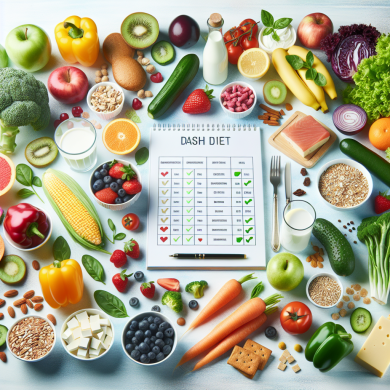DASH Diet: Effective Strategy for Weight Loss
Introduction to the DASH Diet
The Dietary Approaches to Stop Hypertension (DASH) diet is a well-researched eating plan primarily designed to combat high blood pressure. However, its benefits extend far beyond just managing hypertension. The DASH diet has gained significant attention as an effective strategy for weight loss, making it a popular choice for individuals seeking a balanced, sustainable approach to shedding excess pounds. This article delves into the principles of the DASH diet, its effectiveness for weight loss, and practical tips for incorporating it into your lifestyle.
Understanding the Principles of the DASH Diet
The DASH diet emphasizes a nutrient-rich eating pattern that includes a variety of foods. It focuses on consuming:
– Fruits and vegetables
– Whole grains
– Lean proteins such as poultry, fish, and nuts
– Low-fat or non-fat dairy products
– Limited amounts of red meat, sweets, and sugary beverages
The diet is low in saturated fats, cholesterol, and total fat. It also encourages a reduction in sodium intake, which is a crucial element in managing high blood pressure and promoting heart health.
The Connection Between DASH Diet and Weight Loss
While the DASH diet was initially designed to lower blood pressure, its structured, balanced nature makes it an effective tool for weight loss. Here’s how it works:
Calorie Control
The DASH diet naturally limits calorie intake by focusing on whole, nutrient-dense foods. By prioritizing fruits, vegetables, and whole grains, individuals often consume fewer calories than they would with a diet high in processed foods and refined sugars.
Increased Satiety
Foods that are high in fiber, such as fruits, vegetables, and whole grains, promote feelings of fullness and satiety. This can help reduce overall calorie consumption by decreasing the likelihood of overeating.
Reduced Sugar and Fat Intake
By limiting processed foods, sweets, and high-fat items, the DASH diet reduces the intake of empty calories often associated with weight gain.
Improved Nutrient Intake
The emphasis on a variety of nutrient-rich foods ensures that individuals following the DASH diet receive essential vitamins and minerals, supporting overall health and wellbeing, which can indirectly aid in weight management.
Scientific Evidence Supporting DASH Diet for Weight Loss
Numerous studies have explored the effectiveness of the DASH diet for weight loss and overall health improvement. Research indicates that individuals who adhere to the DASH diet can experience significant weight loss, particularly when combined with regular physical activity. In a study published in the “Journal of the American College of Cardiology,” participants following the DASH diet for eight weeks experienced weight loss alongside reductions in blood pressure.
Additionally, a study in the “American Journal of Clinical Nutrition” highlighted that the DASH diet, when combined with a caloric deficit, resulted in substantial weight loss and improvements in metabolic health indicators.
Practical Tips for Implementing the DASH Diet
Transitioning to the DASH diet can be a rewarding journey toward improved health and sustainable weight loss. Here are some practical tips to help you get started:
Plan Your Meals
Start by planning your meals around the core components of the DASH diet. Focus on incorporating fruits, vegetables, whole grains, lean proteins, and low-fat dairy into each meal. Planning ahead can help you make healthier choices and avoid last-minute temptations.
Monitor Portion Sizes
Paying attention to portion sizes is crucial when aiming for weight loss. The DASH diet encourages moderate portions, which can help control caloric intake without feeling deprived.
Reduce Sodium Gradually
If you’re accustomed to a high-sodium diet, transitioning to lower sodium levels may take time. Gradually reduce your sodium intake by choosing fresh, unprocessed foods and using herbs and spices for flavor instead of salt.
Increase Physical Activity
Pairing the DASH diet with regular physical activity enhances its weight loss benefits. Aim for at least 150 minutes of moderate-intensity exercise per week, such as brisk walking, cycling, or swimming.
Stay Hydrated
Drinking plenty of water is essential for weight loss and overall health. Water not only helps control hunger but also supports metabolic processes in the body.
Seek Professional Guidance
If you’re unsure about how to implement the DASH diet or need personalized advice, consider consulting a registered dietitian or healthcare professional. They can help tailor the diet to your specific needs and goals.
Overcoming Challenges with the DASH Diet
Like any dietary change, adapting to the DASH diet may come with challenges. Here are some common obstacles and strategies for overcoming them:
Adapting to New Flavors
For those accustomed to a high-sodium or high-sugar diet, the flavors of the DASH diet may initially seem bland. Experiment with herbs, spices, and healthy condiments to enhance the taste of your meals.
Managing Social Situations
Social gatherings and dining out can pose challenges to adhering to the DASH diet. Plan ahead by reviewing menus, choosing restaurants with healthier options, and communicating your dietary preferences to friends and family.
Staying Consistent
Consistency is key to success with any diet. Set realistic goals, track your progress, and remind yourself of the health benefits you’re working toward to stay motivated.
Conclusion
The DASH diet is a powerful, evidence-based strategy for weight loss that promotes long-term health and wellness. By focusing on whole, nutrient-dense foods and reducing sodium intake, individuals can achieve sustainable weight loss while improving heart health and overall wellbeing. With careful planning, portion control, and dedication, the DASH diet can become a lifelong approach to healthy eating, helping individuals reach and maintain their weight loss goals. Whether you’re looking to lose weight or simply improve your diet, the DASH diet offers a balanced, flexible framework for achieving optimal health.















Add comment